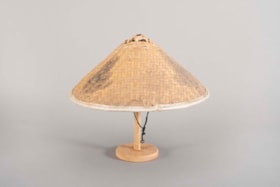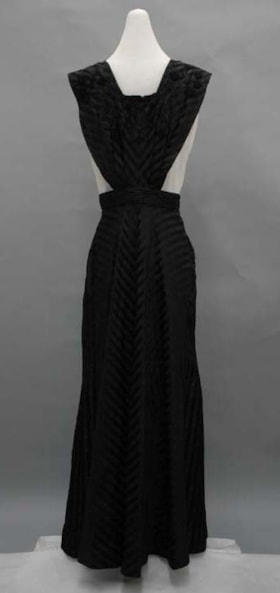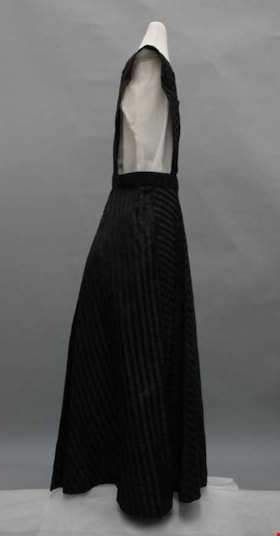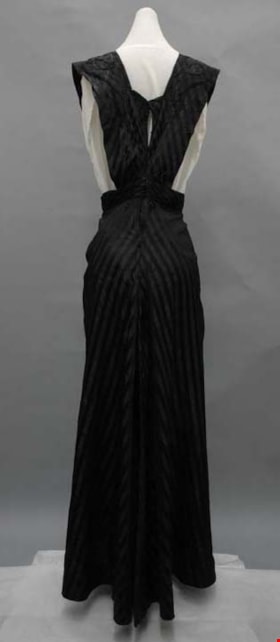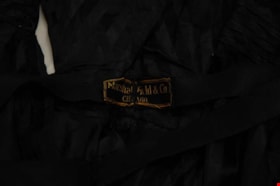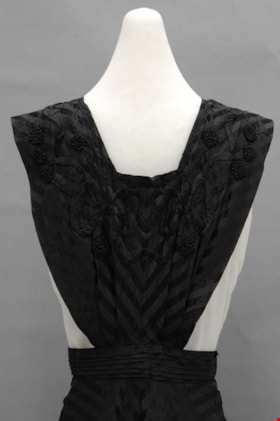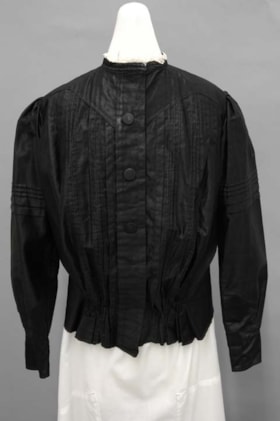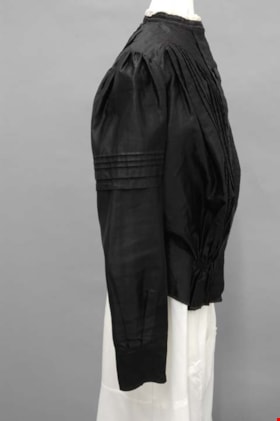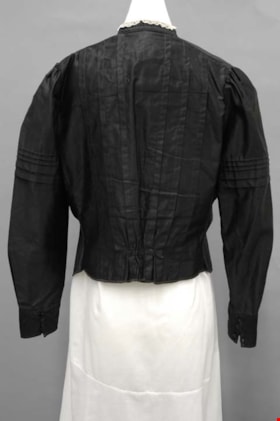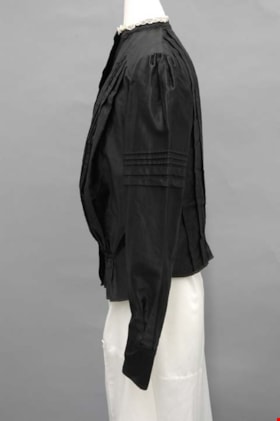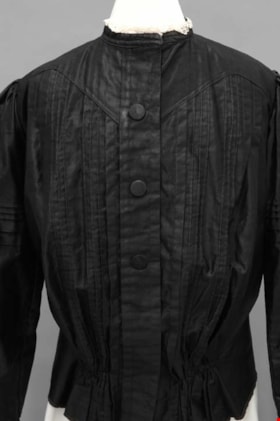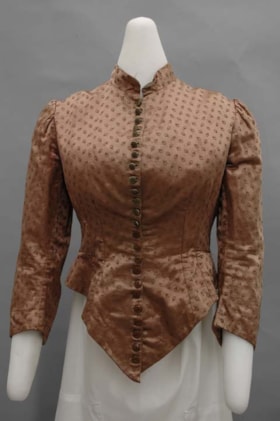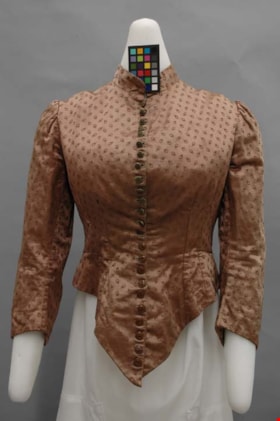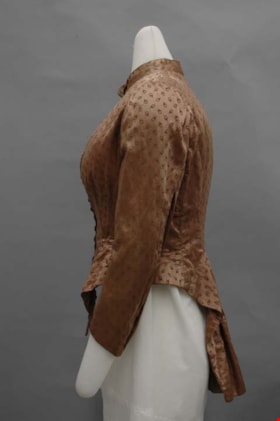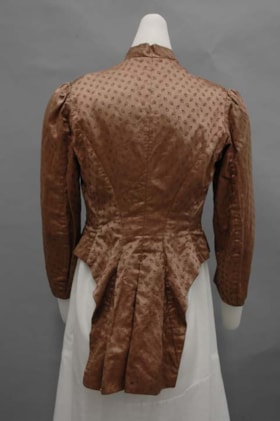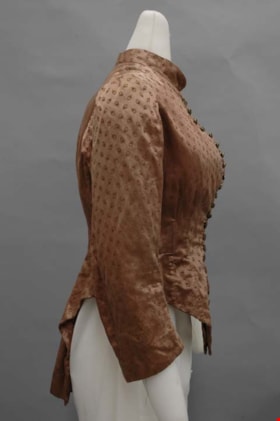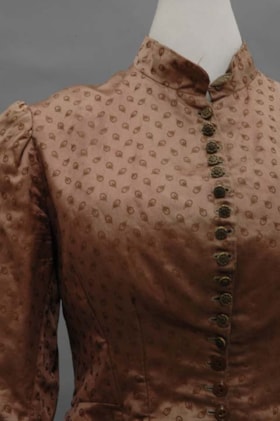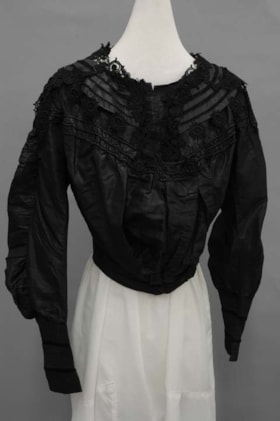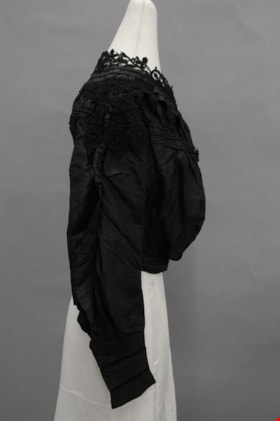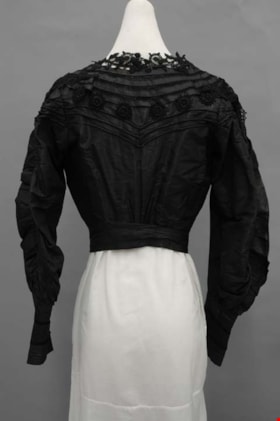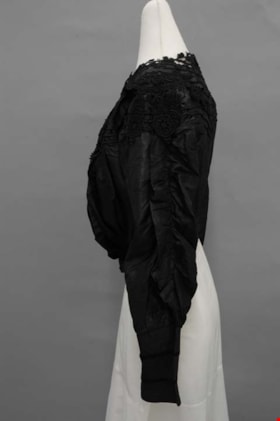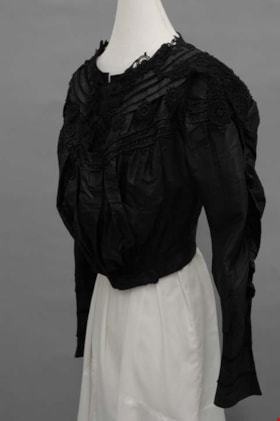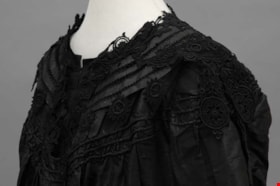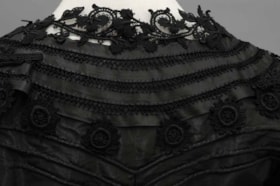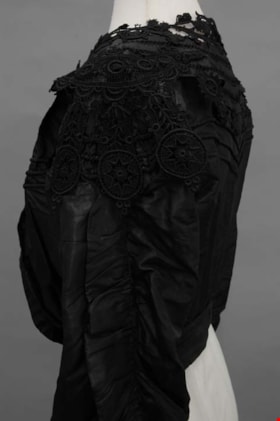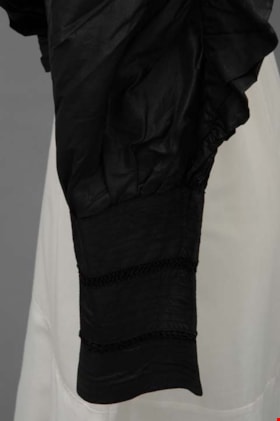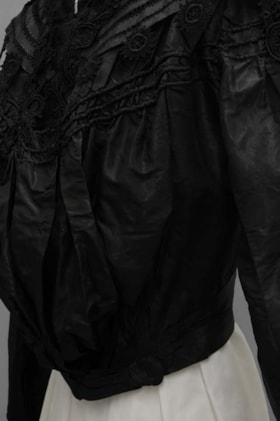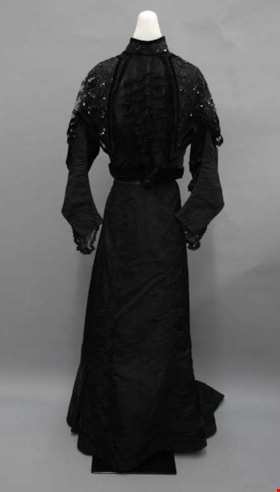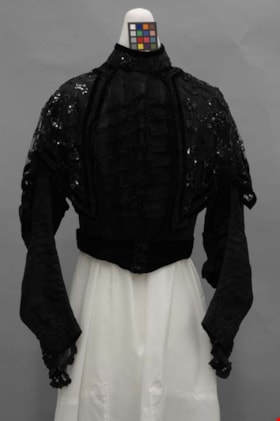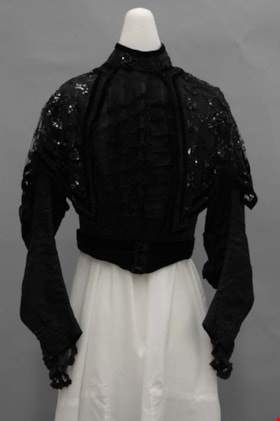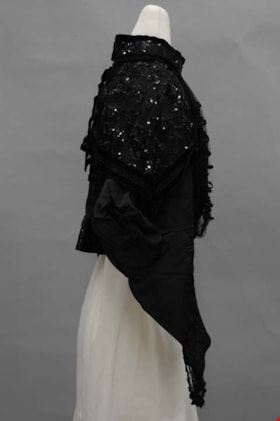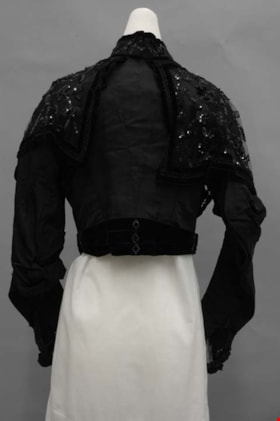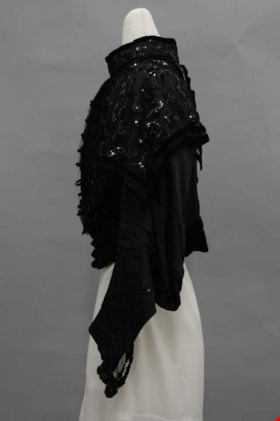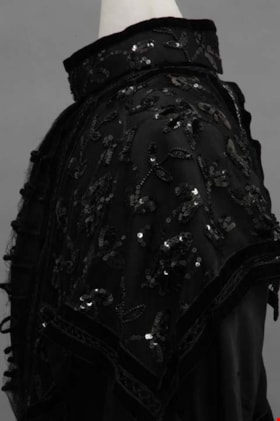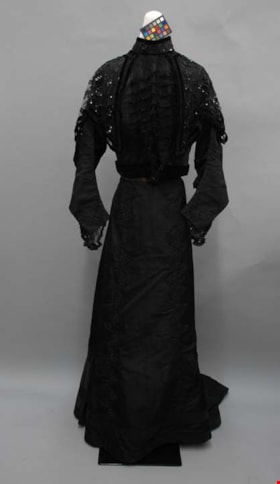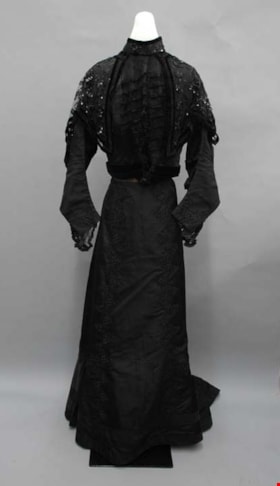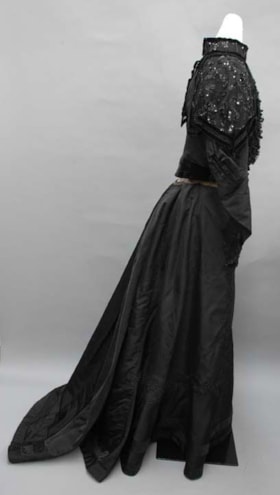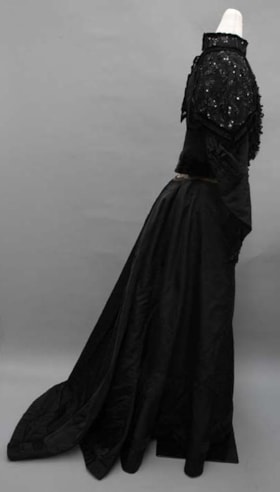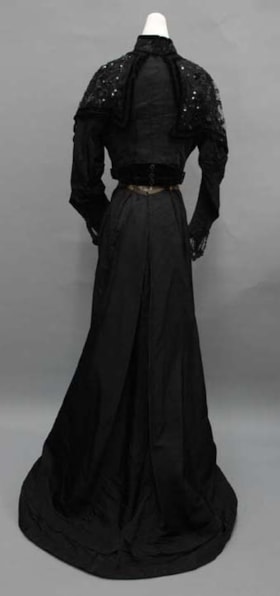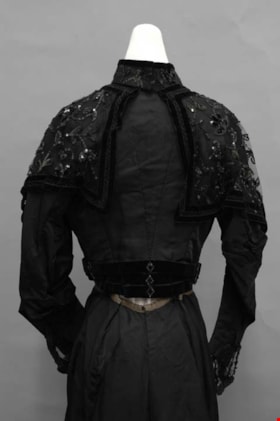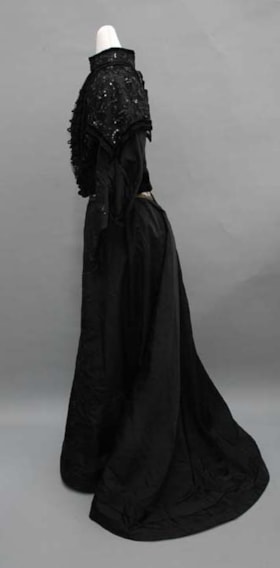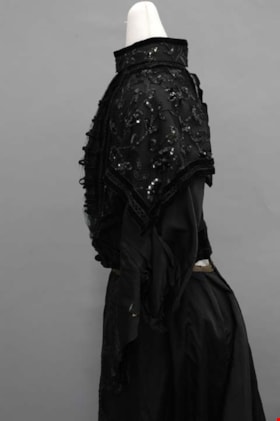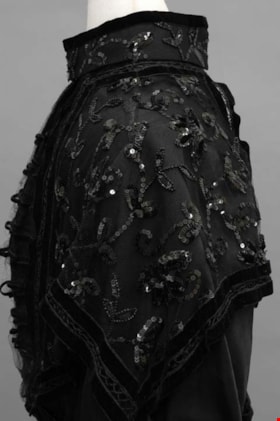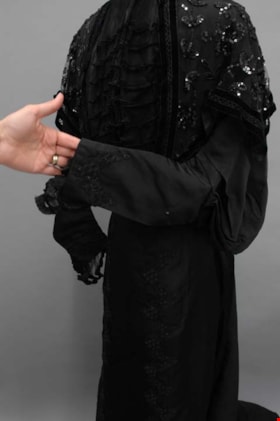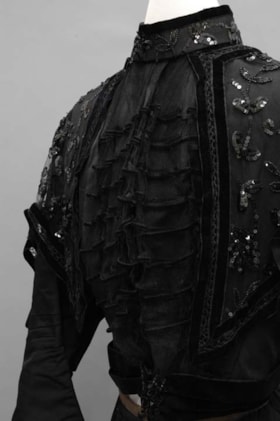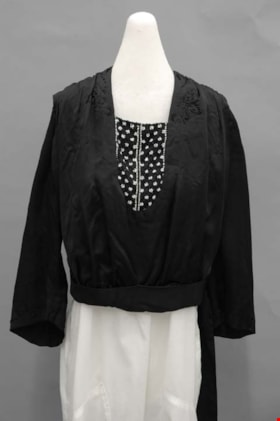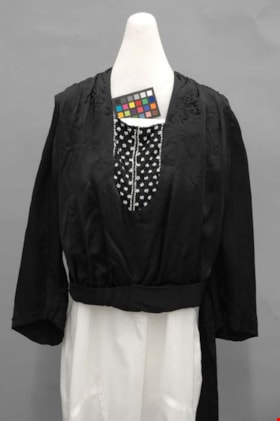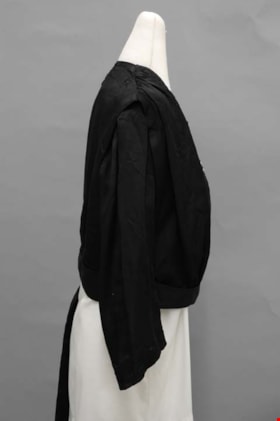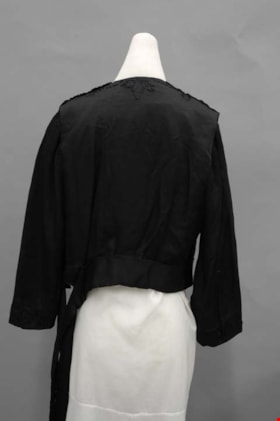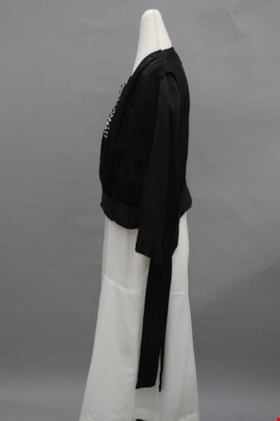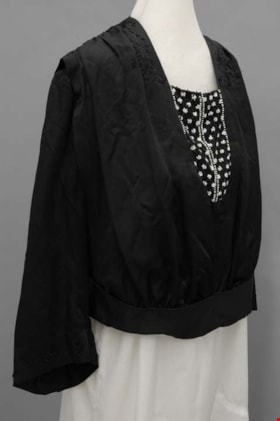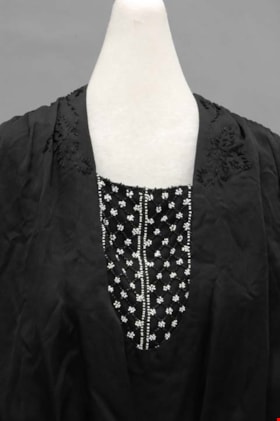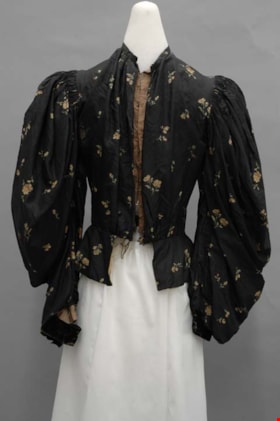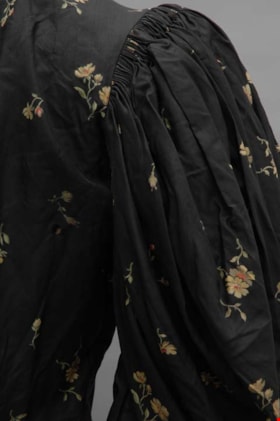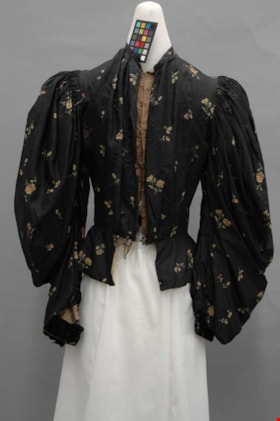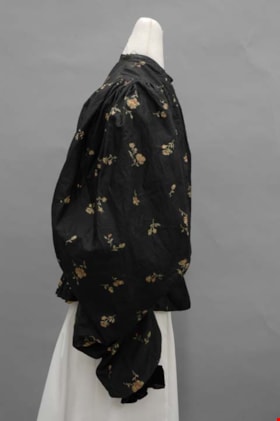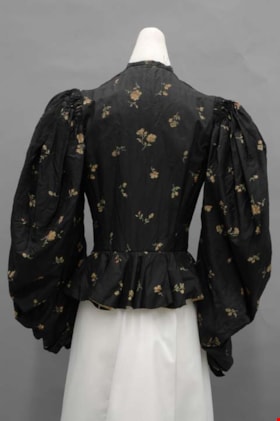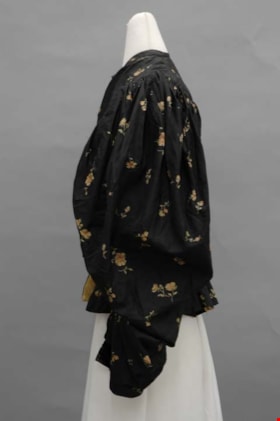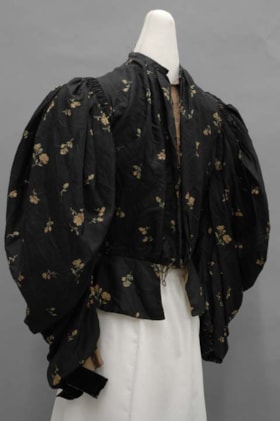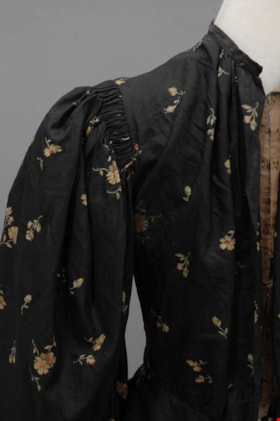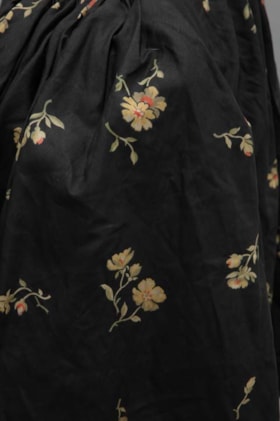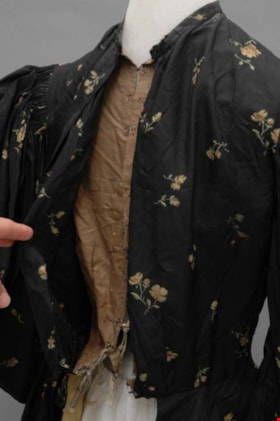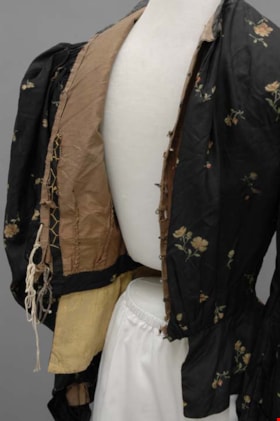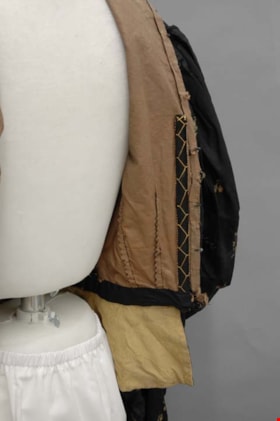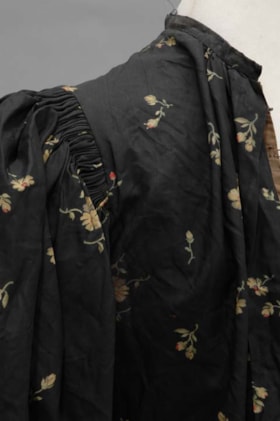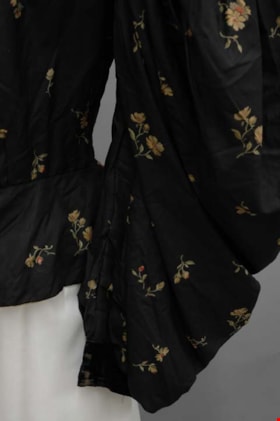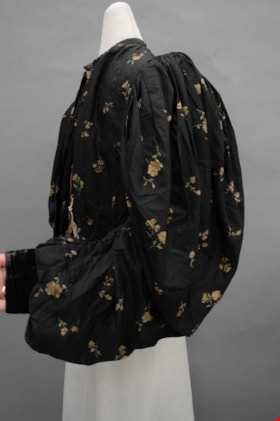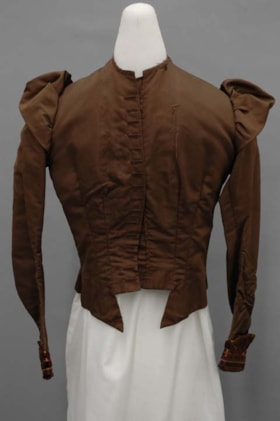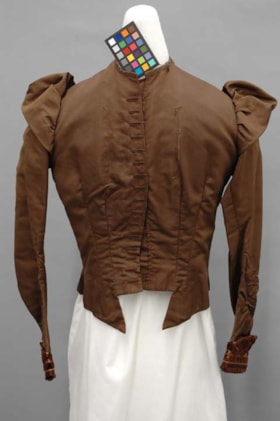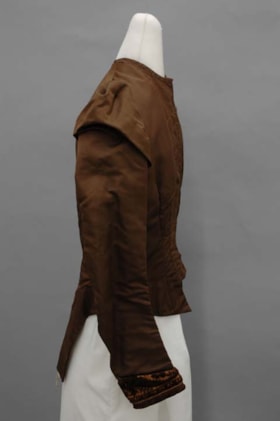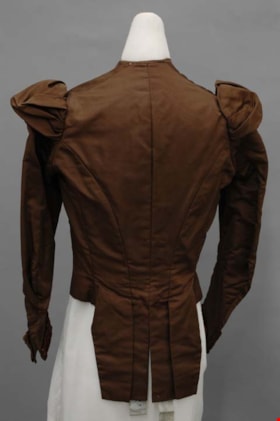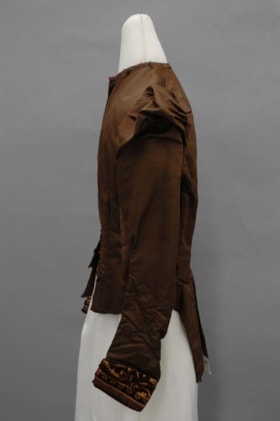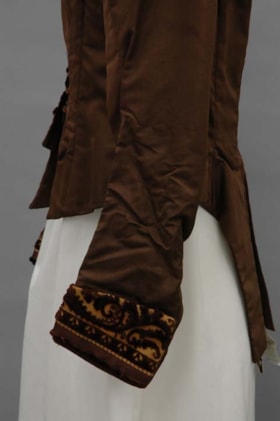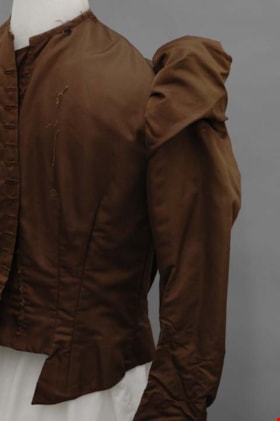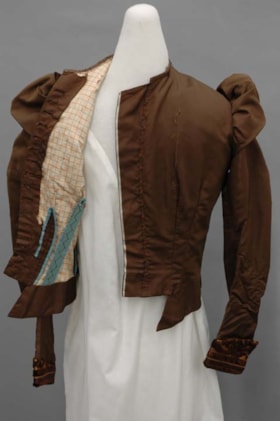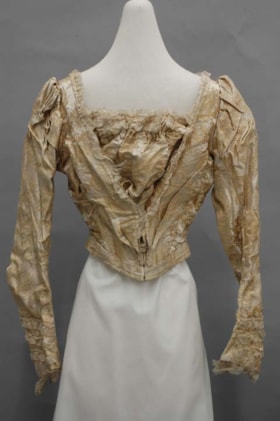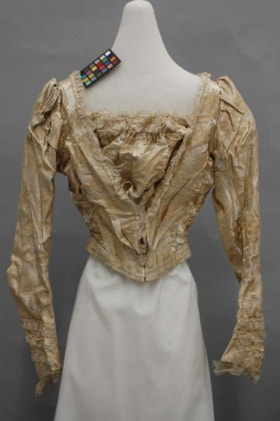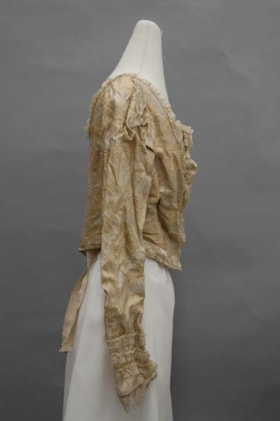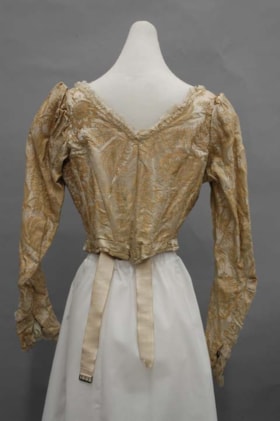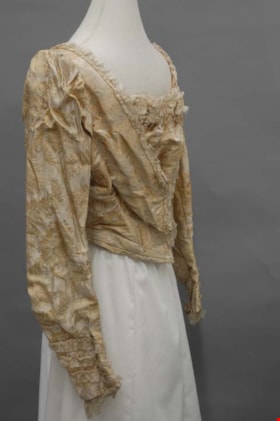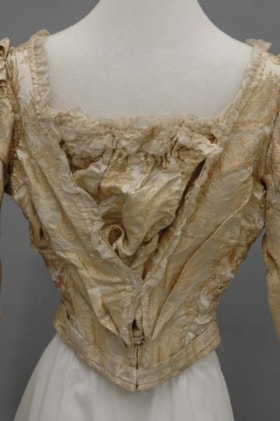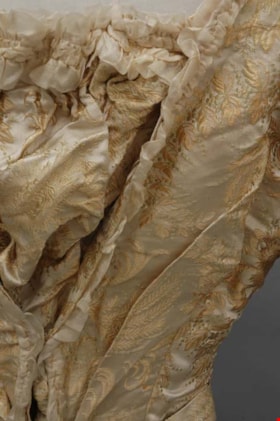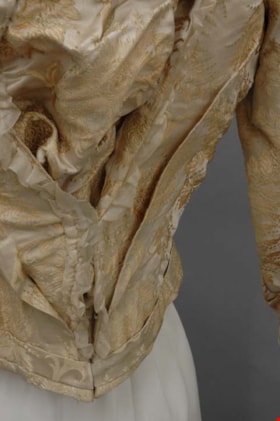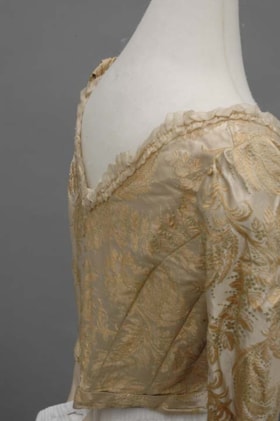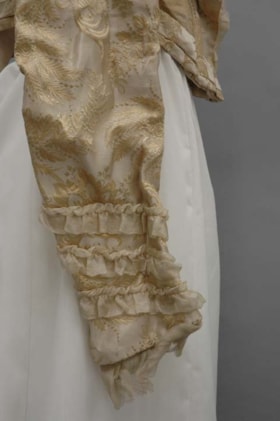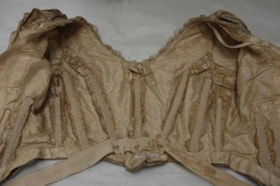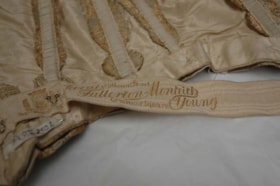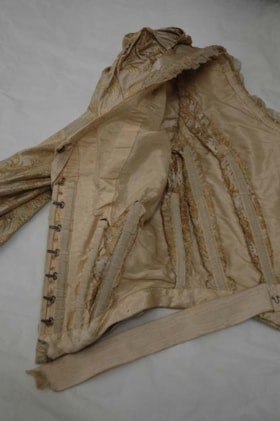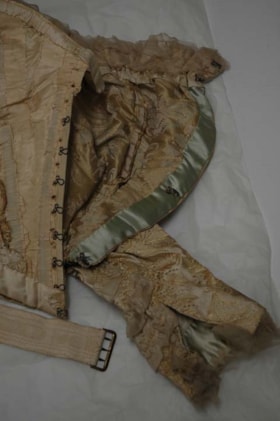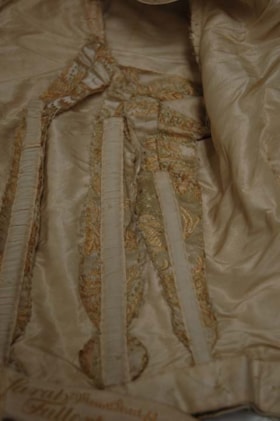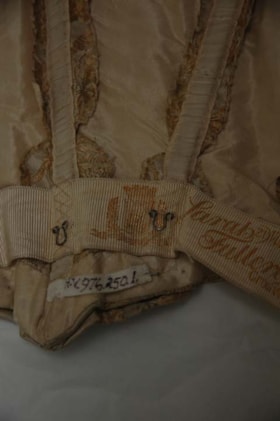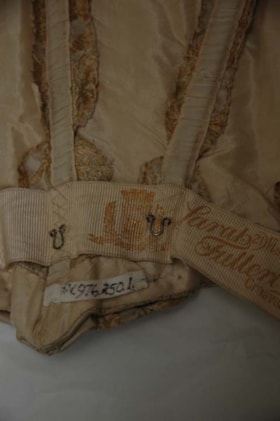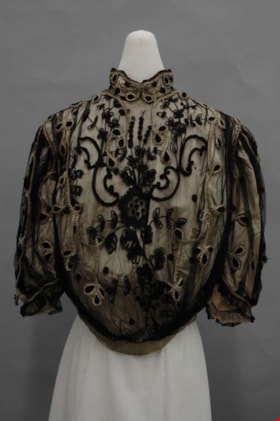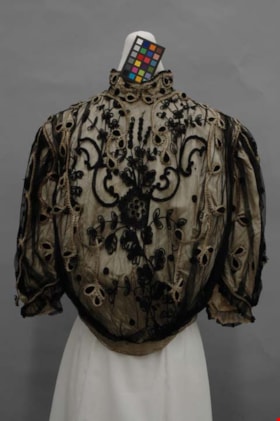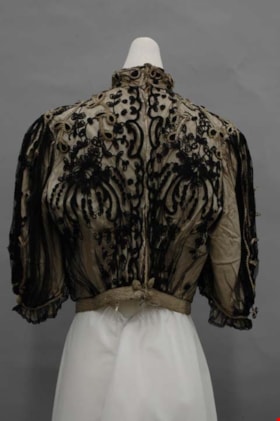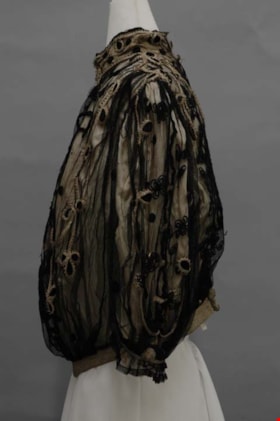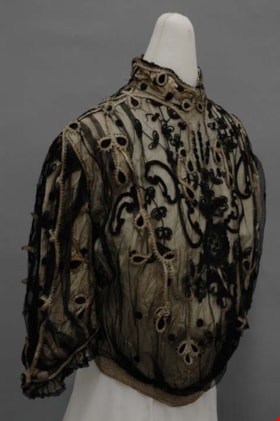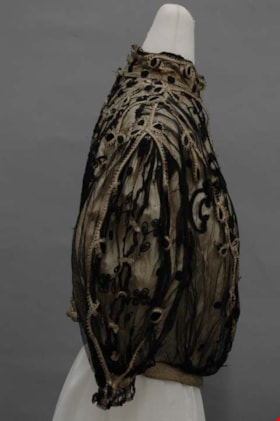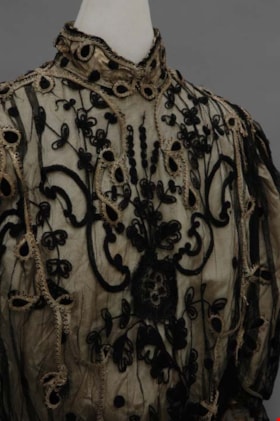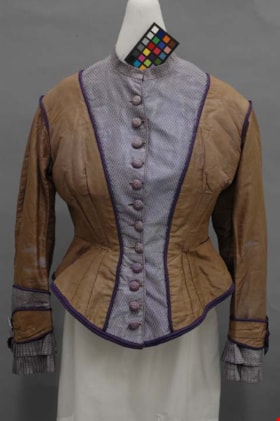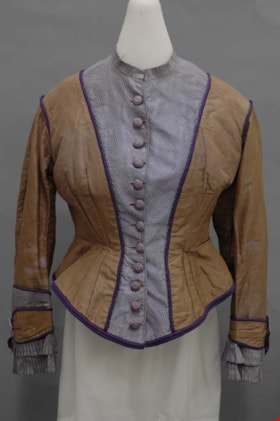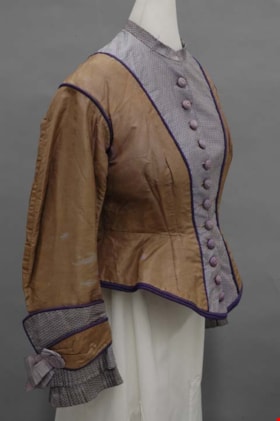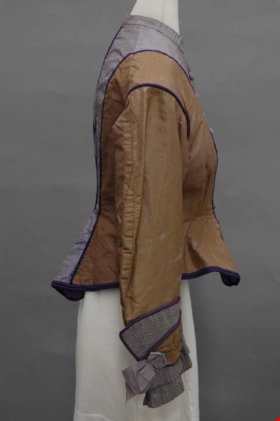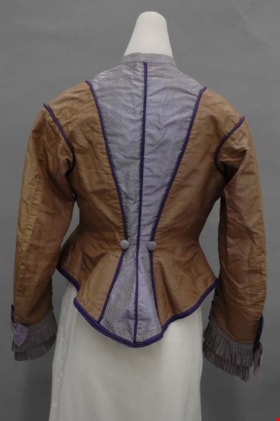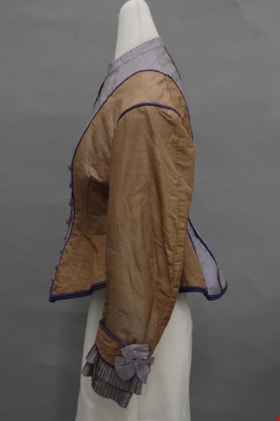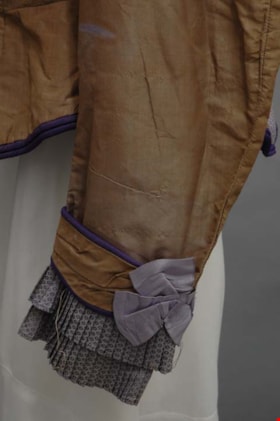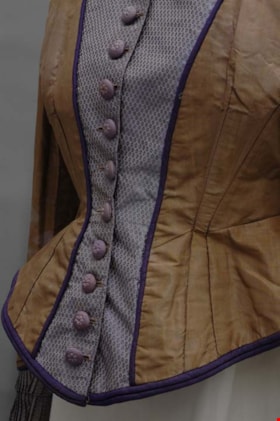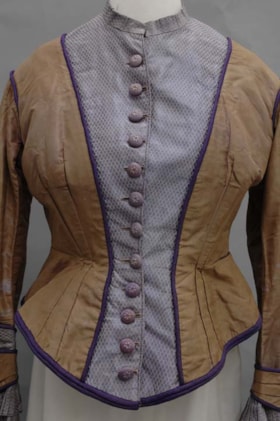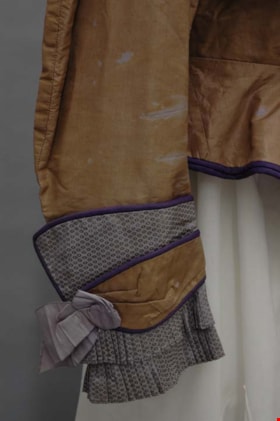More like 'dressing gown'
Narrow Results By
Decade
- 2020s 63
- 2010s 57
- 2000s 638
- 1990s 289
- 1980s 262
- 1970s 507
- 1960s 149
- 1950s 198
- 1940s 346
- 1930s 227
- 1920s 178
- 1910s 167
- 1900s 58
- 1890s 22
- 1880s 9
- 1870s 4
- 1860s 4
- 1850s 1
- 1840s 1
- 1830s 2
- 1820s 1
- 1810s 1
- 1800s 1
- 1790s 1
- 1780s 1
- 1770s 1
- 1760s 1
- 1750s 1
- 1740s 1
- 1730s 1
- 1720s 1
- 1710s 1
- 1700s 1
- 1690s 1
- 1680s 1
- 1670s 1
- 1660s 1
- 1650s 1
- 1640s 1
- 1630s 1
- 1620s 1
- 1610s 1
- 1600s 1
Subject
- Adornment 4
- Adornment - Jewelry 2
- Adornment - Lapel Pins 6
- Advertising Medium 6
- Advertising Medium - Poster 1
- Advertising Medium - Signs and Signboards 12
- Aerial Photographs 1
- Agricultural Tools and Equipment 4
- Agricultural Tools and Equipment - Gardening Equipment 2
- Agriculture 10
- Agriculture - Crops 3
- Agriculture - Farms 33
Tannis family
https://search.heritageburnaby.ca/link/archivedescription97243
- Repository
- City of Burnaby Archives
- Date
- [2000]
- Collection/Fonds
- Burnaby NewsLeader photograph collection
- Description Level
- File
- Physical Description
- 2 photographs (tiff) : col.
- Scope and Content
- File contains photographs of three members of the Tannis Family, dressed in 1950s style costumes, posing on the stoop of a residential home.
- Repository
- City of Burnaby Archives
- Date
- [2000]
- Collection/Fonds
- Burnaby NewsLeader photograph collection
- Physical Description
- 2 photographs (tiff) : col.
- Description Level
- File
- Record No.
- 535-2651
- Access Restriction
- No restrictions
- Reproduction Restriction
- No restrictions
- Accession Number
- 2018-12
- Scope and Content
- File contains photographs of three members of the Tannis Family, dressed in 1950s style costumes, posing on the stoop of a residential home.
- Subjects
- Clothing - Costumes
- Persons - Families
- Media Type
- Photograph
- Notes
- Title based on original file name
- Collected by editorial for use in an August 2000 issue of the Burnaby NewsLeader
Images
Valleyview Community Centre celebrations
https://search.heritageburnaby.ca/link/archivedescription34084
- Repository
- City of Burnaby Archives
- Date
- [1940]
- Collection/Fonds
- Burnaby Historical Society fonds
- Description Level
- Item
- Physical Description
- 1 photograph : b&w ; 10.2 x 12.9 cm
- Scope and Content
- Photograph of costumed children at the Valleyview Community Centre celebrations. One girl is dressed as a cake with two candles. The cake partially reads, "Anniversary / [Valleyview] Fair." There is a crowd watching as the children pass by.
- Repository
- City of Burnaby Archives
- Date
- [1940]
- Collection/Fonds
- Burnaby Historical Society fonds
- Subseries
- Photographs subseries
- Physical Description
- 1 photograph : b&w ; 10.2 x 12.9 cm
- Description Level
- Item
- Record No.
- 009-019
- Access Restriction
- No restrictions
- Reproduction Restriction
- No known restrictions
- Accession Number
- BHS2007-04
- Scope and Content
- Photograph of costumed children at the Valleyview Community Centre celebrations. One girl is dressed as a cake with two candles. The cake partially reads, "Anniversary / [Valleyview] Fair." There is a crowd watching as the children pass by.
- Subjects
- Clothing - Costumes
- Persons - Crowds
- Events
- Media Type
- Photograph
- Notes
- Title based on contents of photograph
- Geographic Access
- Canada Way
- Street Address
- 4949 Canada Way
- Historic Neighbourhood
- Burnaby Lake (Historic Neighbourhood)
- Planning Study Area
- Morley-Buckingham Area
Images
Winnie the Pooh at Lougheed Mall
https://search.heritageburnaby.ca/link/archivedescription97321
- Repository
- City of Burnaby Archives
- Date
- [2001]
- Collection/Fonds
- Burnaby NewsLeader photograph collection
- Description Level
- Item
- Physical Description
- 1 photograph (tiff) : col.
- Scope and Content
- Photograph of two unidentified children posing with a Winnie the Pooh mascot at Lougheed Mall.
- Repository
- City of Burnaby Archives
- Date
- [2001]
- Collection/Fonds
- Burnaby NewsLeader photograph collection
- Physical Description
- 1 photograph (tiff) : col.
- Description Level
- Item
- Record No.
- 535-2712
- Access Restriction
- No restrictions
- Reproduction Restriction
- No restrictions
- Accession Number
- 2018-12
- Scope and Content
- Photograph of two unidentified children posing with a Winnie the Pooh mascot at Lougheed Mall.
- Subjects
- Clothing - Costumes
- Persons - Children
- Names
- Lougheed Town Centre
- Media Type
- Photograph
- Photographer
- Bartel, Mario
- Notes
- Title based on caption
- Collected by editorial for use in an August 2001 issue of the Burnaby NewsLeader
- Caption from metadata: "Winnie the Pooh greets some of his young fans at a special appearance at Lougheed Mall on Wednesday."
- Geographic Access
- Austin Road
- Street Address
- 9855 Austin Avenue
- Historic Neighbourhood
- Burquitlam (Historic Neighbourhood)
- Planning Study Area
- Cameron Area
Images
bodice
https://search.heritageburnaby.ca/link/museumartifact80789
- Repository
- Burnaby Village Museum
- Accession Code
- BV007.16.1
- Description
- Black Victorian/Edwardian bodice. The material is a black silk satin with lace trim around the collar and cuffs. The bodice has a button enclosure at the front however all the buttons have been removed. The bodice is fully boned with green lining on the inside.
- Object History
- Found in the 1950s when donor moved to 3814 Oxford Street, the former home of Burnaby Councillor Angus MacDonald (1854-1943). Presumed to be from his family and could have belonged to his spouse Margaret I. Thompson MacDonald (1862-1939).
Images
Elementary school students
https://search.heritageburnaby.ca/link/museumdescription1257
- Repository
- Burnaby Village Museum
- Date
- [between 1912 and 1928]
- Collection/Fonds
- Way Sang Yuen Wat Kee & Co. fonds
- Description Level
- Item
- Physical Description
- 1 photograph : sepia ; 21 x 27 cm, mounted on card 32.5 x 39 cm
- Scope and Content
- Photograph of eighty-four boys dressed in uniform, seated and standing in formation in front of an elementary school with their ten teachers. Three Five Races Under One Union flags (national flag for the Republic of China) are prominently displayed.
- Repository
- Burnaby Village Museum
- Collection/Fonds
- Way Sang Yuen Wat Kee & Co. fonds
- Description Level
- Item
- Physical Description
- 1 photograph : sepia ; 21 x 27 cm, mounted on card 32.5 x 39 cm
- Material Details
- Card mount has a decorative border
- Scope and Content
- Photograph of eighty-four boys dressed in uniform, seated and standing in formation in front of an elementary school with their ten teachers. Three Five Races Under One Union flags (national flag for the Republic of China) are prominently displayed.
- Accession Code
- BV985.5331.5
- Access Restriction
- No restrictions
- Reproduction Restriction
- May be restricted by third party rights
- Date
- [between 1912 and 1928]
- Media Type
- Photograph
- Scan Resolution
- 600
- Scan Date
- 1/7/2010
- Scale
- 100
- Notes
- Title based on contents of photograph
- Note on verso of photograph is written in Chinese characters
Images
hat
https://search.heritageburnaby.ca/link/museumartifact91751
- Repository
- Burnaby Village Museum
- Accession Code
- BV023.14.7
- Description
- Conical straw or bamboo hat. The material is woven together and has a white nylon corded edge. There is an internal hat ring that would rest on the wearer's head. The ring is made out of plastic and is zap strapped to the inner structure of the woven hat. There is a black cord chin strap attached to the ring.
- The top of the cone is damaged and missing.
- There are three smudged marks evenly spaced around the outside of the hat, indicating some sort of design at one point.
- Object History
- These items belonged to the Hong family - who founded Hop On Farms in Burnaby. Heritage Burnaby has a number of photos and an oral history about the family.
- Used by family and farm workers until 2022.
- Category
- 03. Personal Artifacts
- Classification
- Clothing - - Headwear
- Object Term
- Hat
- Measurements
- Diameter: 42 cm
- Names
- Hop on Farms
Images
Interview with Prem Kaur Gill, Santokh Singh Gill and Mohinder Kaur Gill
https://search.heritageburnaby.ca/link/museumdescription19347
- Repository
- Burnaby Village Museum
- Date
- [1957-2022] (interview content), interviewed 11 Nov. 2022
- Collection/Fonds
- Burnaby Village Museum fonds
- Description Level
- Item
- Physical Description
- 1 sound recording (m4a) (118 min., 39 sec.) + 1 sound recording (mp3) (115 min., 20 sec.)
- Scope and Content
- Item consists of an oral history interview with Santokh "Gurmail" Singh Gill and Mohinder Kaur Gill and their daughter, Prem Kaur Gill conducted by interviewers, Anushay Malik and Rajdeep. The interview is conducted in English, Punjabi, Hindi and Urdu. The three members of the Gill family share the…
- Repository
- Burnaby Village Museum
- Collection/Fonds
- Burnaby Village Museum fonds
- Series
- Museum Oral Histories series
- Description Level
- Item
- Physical Description
- 1 sound recording (m4a) (118 min., 39 sec.) + 1 sound recording (mp3) (115 min., 20 sec.)
- Material Details
- Interviewers: Anushay Malik, Rajdeep Interviewees: Prem Kaur Gill, Santokh "Gurmail" Singh Gill and Mohinder Kaur Gill Location of Interview: Gill family residence on Warwick Avenue in Burnaby Interview Date: November 11, 2022 Total Number of tracks: 1 Total Length of all Tracks: (1:58:39) Digital master recording (m4a) was converted to mp3 for access on Heritage Burnaby
- Scope and Content
- Item consists of an oral history interview with Santokh "Gurmail" Singh Gill and Mohinder Kaur Gill and their daughter, Prem Kaur Gill conducted by interviewers, Anushay Malik and Rajdeep. The interview is conducted in English, Punjabi, Hindi and Urdu. The three members of the Gill family share their ancestral background, their personal experiences immigrating to Canada, living in Burnaby and working in British Columbia as South Asian immigrants. 00:00 – 27:34 Santokh “Gurmail” Singh Gill and Mohinder Kaur Gill share their migration stories and experiences living and working in British Columbia as South Asian immigrants and their eldest child, Prem Kaur Gill shares her own experiences as a child of South Asian immigrants and growing up in British Columbia as a South Asian Canadian. Gurmail Singh Gill was born in the District of Jalandhar and Mohinder Kaur Gill was born in Hoshiapur of the Indian state of Punjab. Gurmail describes how he moved from India to England with his family in 1957, immigrated to Canada from England in 1966, married his wife Mohinder in England in 1968 and brought his family (parents and two siblings) to Canada from England in 1970 and other relatives including his wife’s family in the 1970s and 1980s. Mohinder and Gurmail Gill recollect their arranged marriage in England in 1968, their immigration process and explain how they arrived in Burnaby residing with a cousin at 4649 Georgia Street until they were able to purchase their own home after a few years. Gurmail shares names and connections to the relatives that came to British Columbia before him. Gurmail and Mohinder tell how they lived in the basement of the house and rented out the upper floor to save money. The couple recall what they brought with them when they immigrated to Canada and Mohinder Kaur Gill tells of how before leaving India, she and her mother made a special rajai for her to take with her. Mohinder describes the process of making a rajai (a quilted blanket that was made by hand). Gurmail and Mohinder Gill talk about the challenges that they’ve experienced as new immigrants including not being fluent in English, the cold weather and not having very many family or friends nearby to provide support. They attended the Gurdwara on Ross Street or Akali Singh Sikh Society Gurdwara on Skeena in Vancouver. They explain how there was limited access to grocery stores that supplied Punjabi and Indian spices and other cooking supplies. They talk about how they used a food mill and mortar and pestle to grind their own spices and flour and how Mohinder often made traditional sweets like barfi and laddo and pakoras using pea flour when they couldn’t get Besan flour. 27:35 – 36:11 Gurmail provides more details on his family’s immigration story, including names of relatives, how his six siblings and parents all immigrated to British Columbia in 1970 and how in the early 1970s and mid 1980’s Gurmail and his family sponsored approximately 70 friends and relations from India (including Mohinder’s family) to immigrate to Canada. When Mohinder’s family arrived they lived with them in their house until they were able to purchase property next door and build their own home. Children in the families all attended elementary and high school in Burnaby which now amounts to three generations. 36:12 – 59:28 Gurmail and Mohinder Gill talk about their experiences of racial discrimination. Gurmail recalls members of the South Asian community, Dr. Hari Prakash Sharma, Harinder Mahil and Charan Gill starting the British Columbia Organization to Fight Racism. Gurmail tells of how he got involved contributing some of his union dues as a member of CAIMAW (Canadian Association of Industrial Mechanical and Allied Workers Union- Local 15) and as a friend of Charan Gill and Raj Chouhan of the Canadian Farm Workers Union. Gurmail Gill explains how he was a founding member of CAIMAW and treasurer until the union merged with the Canadian Auto Workers Union (in 1991). Mohinder and Gurmail tell of how people from the South Asian community were discouraged from wearing Punjabi dresses or head coverings for fear of being yelled at with racial slurs and how it was often scary to go outside. Many from their community often avoided attending the Akali Singh Gurdwara since a head covering was required and people were afraid of being a target. Gurmail provides details about his work with A1 Steel, how different unions were formed pertaining to various skillsets and jobs per company and how he became a member of CAIMAW Local 15 (foundry workers). Mohinder recollects her experiences as a mother, the daily tasks involved and friends that she made who’d also emigrated from Punjab. Mohinder describes how she designed and sewed many Punjabi dresses using her electric sewing machine and how she learned English by attending adult classes at a church on Commercial Drive. Mohinder and her mother attended the classes for two hours per day for six years at a cost of twelve dollars for ten weeks. Once Mohinder could speak a little English, she started working and was able to practice more. 59:29 – 1:06:08 Mohinder, Gurmail and Prem talk about some of their favourite traditional foods including corn roti and spinach curry and how they grow many of their own vegetables including peppers, eggplant, saag (spinach), onions, garlic, cilantro, zucchini, squash and fenugreek. Mohinder reflects on how access to Punjabi clothing and fabric stores in Vancouver has changed and that ready made food is now more available. Traditional foods were previously made from scratch with women gathering together and cooking for hours and now it’s gotten easier but more expensive and less of a community feel. 1:06:09- 1:55:20 Mohinder and Gurmail Gill discuss and share their perspectives and experiences on raising a family in the past versus today. Gurmail imparts that all of his siblings became educated and secured professional careers while he continued to work in the trades. Prem Kaur Gill shares her own experiences growing up and attending school in Burnaby. Gurmail and Mohinder Gill recall the type of suitcase that they brought with them when they immigrated and how they recently they got rid of it. Gurmail and the group reflect and discuss the confusion with racial identity terms that have been used in this country. They comment that South Asians were referred to as “Hindu” and “East Indian” and Indigenous peoples were referred to as “Indian” and the controversy and racism behind some of these terms. The group discusses the impact of the caste system and other discriminatory experiences and compare their experiences of living in England to living in Canada. Prem comments on how it’s just recently that South Asian customs, celebrations and practices have been recognized and celebrated here in Canada, like Diwali and yoga. They comment on how much of the language, culture and customs have been retained in Surrey where many can still communicate in Punjabi and don’t need to be fluent in English. The group discusses how many South Asians immigrants first lived and worked in Vancouver but with rising property prices many moved to Surrey expanding and establishing a much larger South Asian community with resources. The group discusses and compares the differing travel routes that many of them and their relatives took when immigrating and travelling between India and Canada. The group talks about Rajdeep’s ancestral village in India which is near the Gill village of Firozpur. Gurmail explains the origins and details behind his family name that was changed from “Shergill” to “Gill” and the name “Santokh” from his maternal side.
- History
- Interviewees' biographies: Santokh "Gurmail" Singh Gill was born in the District of Jalandhar in Punjab, India. Gurmail moved to England with his family in 1957 and immigrated to British Columbia in 1966. Gurmail married his wife, Mohinder Kaur Gill in England in 1968 and she immigrated to British Columbia from England soon after. Gurmail first lived with a cousin in Burnaby before purchasing a home of his own in Burnaby where he raised his family. Gurmail worked in the steel industry and was a member and treasurer of the CAIMAW before the union merged with the Canadian Auto Workers Union. Mohinder Kaur Gill was born in the Hoshiapur in Punjab, India. She married her husband Santokh "Gurmail" Singh Gill in England in 1968 and immigrated to Burnaby, British Columbia to join her husband. Mohinder and Gurmail Gill have four children, all born in Burnaby. Prem Kaur Gill was born in Burnaby in 1969 and is the eldest child of Santokh "Gurmail" Singh Gill and Mohinder Kaur Gill. Prem grew up and attended school in Burnaby. Interviewers' biographies: Anushay Malik is labor historian with a geographical focus on South Asia. Anushay studied at the University of London and was a research fellow at the International Institute of Social History in Amsterdam, Netherlands. In 2014, Anushay moved back to her native Pakistan and joined Lahore University of Management Services as an Assistant Professor. In 2023, Anushay is a visiting scholar at Simon Fraser University and lives in Burnaby with her family. Anushay was a co-curator of the Burnaby Village Museum exhibit “Truths Not Often Told: Being South Asian in Burnaby”. Rajdeep was born and raised in the Lower Mainland and is of Punjabi (South Asian) descent. She has an Associate of Arts degree in Asian Studies from Kwantlen Polytechnic University, a Bachelor of Arts (Hons.) in Anthropology from the University of British Columbia. She is a student in the Restoration of Natural Systems program at the University of Victoria. Rajdeep works at Simon Fraser University as a Program Assistant and as a researcher with the City of Burnaby. At Burnaby Village Museum, Rajdeep contributed to the exhibit “Truths Not Often Told: Being South Asian in Burnaby”.
- Creator
- Burnaby Village Museum
- Subjects
- Clothing
- Foods
- Indigenous peoples
- Buildings - Religious - Temples
- Food Processing Tools and Equipment
- Persons - South Asian Canadians
- Social Issues
- Social Issues - Racism
- Migration
- Occupations
- Organizations - Unions
- Responsibility
- Rajdeep
- Malik, Anushay
- Accession Code
- BV022.29.2
- Access Restriction
- No restrictions
- Reproduction Restriction
- No known restrictions
- Date
- [1957-2022] (interview content), interviewed 11 Nov. 2022
- Media Type
- Sound Recording
- Notes
- Title based on contents of item
- Transcript available upon request - contact Burnaby Village Museum
- Indian Family System Reference notes: Baba = informal way to say grandfather; old man Bibi = informal way to say grandmother; old woman Dada= paternal grandfather Dadi= paternal grandmother Dadke= paternal family members; paternal side (Various spellings might exist for the following terms) Thaiyya= father’s elder brother (uncle) Thaiyyi= father’s elder brother’s wife (aunt) Chacha= father’s younger brother (uncle) Chachi= father’s younger brother’s wife (aunt) Bua= father’s sister (older or younger) (aunt) Phuphar= father’s sister’s husband (uncle) Nana= maternal grandfather Nani= maternal grandmother Nanke/nanka= maternal family members; maternal side Mama= mom’s brother (older or younger) (uncle) Mami= mom’s brother’s wife (aunt) Maasi= mom’s sister (older or younger) (aunt) Maasard= mom’s sister’s husband (uncle)
Audio Tracks
Interview with Prem Kaur Gill, Santokh Singh Gill and Mohinder Kaur Gill, [1957-2022] (interview content), interviewed 11 Nov. 2022
Interview with Prem Kaur Gill, Santokh Singh Gill and Mohinder Kaur Gill, [1957-2022] (interview content), interviewed 11 Nov. 2022
https://search.heritageburnaby.ca/media/hpo/_Data/_BVM_Sound_Recordings/Oral_Histories/2022_0029_0002_002.mp3Interview with Surjeet Kaur Parmar
https://search.heritageburnaby.ca/link/museumdescription19350
- Repository
- Burnaby Village Museum
- Date
- [1905-2022] (interview content), interviewed 6 Dec. 2022
- Collection/Fonds
- Burnaby Village Museum fonds
- Description Level
- Item
- Physical Description
- 2 sound recordings (wav) (75 min., 32 sec.) + 1 sound recording (mp3) (75 min., 32 sec.)
- Scope and Content
- Item consists of a recording of an oral history interview with Surjeet Kaur Parmar conducted by interviewer Anushay Malik. The interview is conducted in Urdu, Hindi and Punjabi. During the interview Surjeet Kaur Parmar provides information on; her ancestral background, family relations in India and…
- Repository
- Burnaby Village Museum
- Collection/Fonds
- Burnaby Village Museum fonds
- Series
- Museum Oral Histories series
- Description Level
- Item
- Physical Description
- 2 sound recordings (wav) (75 min., 32 sec.) + 1 sound recording (mp3) (75 min., 32 sec.)
- Material Details
- Interviewer: Anushay Malik Interviewee: Surjeet Kaur Parmar Language of Interview: Urdu, Hindi and Punjabi Location of Interview: home of Surjeet Kaur Parmar in Burnaby Interview Date: December 6, 2022 Total Number of tracks: 2 Total Length of tracks: (1:15:32) Digital master recordings (wav) were edited into one recording and converted to mp3 for access on Heritage Burnaby
- Scope and Content
- Item consists of a recording of an oral history interview with Surjeet Kaur Parmar conducted by interviewer Anushay Malik. The interview is conducted in Urdu, Hindi and Punjabi. During the interview Surjeet Kaur Parmar provides information on; her ancestral background, family relations in India and Canada, her personal experiences and her ancestors’ stories as South Asian immigrants, reflections on and personal experiences of racial discrimination as a South Asian immigrant, her places of residence, her employment background, her cultural practices and traditions including food, clothing and craft. The interview begins with introductions from interviewer Anushay Mailik. Surjeet Kaur Parmar imparts her own family’s migration story beginning with her very first elders that immigrated to Canada from India. A relative (unnamed) immigrated to Canada first and a few years later (around 1905) returned to India and brought back three cousins that included; Ginaya Singh (Ghania Singh Manhas) and Doman Singh . Mayo Singh (Ghania Singh’s younger brother) came in 1906 on his own to join them. Surjeet’s grandfather (Shair/Sher Singh Manhas) also wanted to immigrate at this time, but he was too young and weak to manage such a long trip. Surjeet conveys that while living in British Columbia, Mayo and Ginaya Singh worked together at saw mills. With their knowledge and understanding of mill work they ended up owning and operating a mill in Paldi near Duncan on Vancouver Island. At this time, most of the men from Surjeet’s family region in Punjab were abroad and with no men living at home. Mayo Singh’s father (Bhulla Singh) looked after her father (Lashman Singh Manhas) and paternal uncle (Kashmir Singh Manhas) back in Punjab. When Mayo’s father died, Mayo Singh adopted her paternal uncle (Kashmir Singh) and brought him to Canada in 1926. Surjeet describes her ancestors’ immigration journey from India to Canada. They all travelled by ship and if someone ran out of money en route, they could work on the ship. Surjeet explains that both Mayo and Ginaya Singh are Surjeet’s grandfather’s first cousins and her father’s second cousins. Surjeet recollects her grandfather (Shair/Sher Singh Manhas) saying “now that you’ve arrived there, take one cousin from each side with you”. Surjeet explains that the cousins were all from the same village in Punjab and her great grandfather wanted someone to go abroad, so he sent a few and had them bring more as the years went on. Surjeet says that she’s uncertain as to why they chose Canada rather than America but thinks that they did some form of research and determined that it was a good place to come to. Surjeet admits that she doesn’t know the name of her paternal grandfather or other elders since she never met them. Surjeet shares that it was a traditional practice to mark pots and pans with family names and imparts that she discovered her father’s name “Lashman Singh” written on the bottom of a glass. Surjeet expresses that she’s marked her own pots and pans with her name to identify which ones are hers when she gets together with family or does catering. Surjeet refers to a kohl bottle that she has and how she’d like to offer it to the museum. She explains how the kohl bottle is no longer in use but was used by her mother (Budhan Kaur Manhas) and daughter and her grandchildren. Surjeet describes a blanket that she made called a “phulkari”, now on display in a small museum in Coquitlam, a wedding shawl, that her daughter now owns and a silk sari with embroidery. Surjeet and Anushay discuss the possibility of donating the kohl bottle and the sari to the museum. Surjeet explains how the kohl is used and how her mother used to make kohl. She describes how you rub the kohl with your hands, put cardamom in it, one or two other ingredients and fill the kohl bottle up with water. Surjeet says that she used kohl as eyeliner when living in India. The interviewer asks Surjeet more about Ginaya Singh. Surjeet conveys that Ginaya Singh ended up leaving the mill on Vancouver Island and moved to Vancouver. After Ginaya Singh died from a heart attack (in 1953) his family moved from Vancouver to Burnaby. Surjeet recalls that following the death of Ginaya Singh’s youngest son, her family didn’t celebrate “Lohri” (a winter festival celebrating newborns and newly married people) for three years. She shares that she was very young at this time but remembers there being beautiful photographs of young children all dressed up and displayed in her family home. She expresses that dressing up for photos has changed over time and adds that suits didn’t really come into fashion until after the 1970s or 1980s. Surjeet conveys that her uncle named Kashmira Singh first worked at the mill in Paldi near Duncan then moved to Vancouver and opened up his own mill in North Vancouver. Surjeet’s father, Lashman Singh Manhas arrived in 1953. Surjeet expresses that Kapoor Singh was educated and worked as a manager at the mill on Vancouver Island. Surjeet recollects meeting Mayo Singh, his wife and eldest son in 1952 when they travelled to India for a cousin’s wedding. Surjeet remembers that Mayo Singh’s family had a very large house in India. She describes the house as a very opulent two story house with indoor plumbing for a bathtub, a kitchen with a woodstove, coloured mirrors, bejeweled curtains, a motor room to park cars, a buffalo and more. Surjeet refers to Nand Singh, a younger brother of Mayo Singh, who travelled from India to San Franciso and spent a year wandering around before deciding to return to India. She describes him as living in Bombay with his wife Vishan Kaur and having a transport business. Nand had two kids that came to Canada. Surjeet recollects the tragic death of Ganda Singh (Ginaya Singh) who died of a heart attack on someone’s doorstep, they thought that he was drunk so didn’t open the door. Surjeet conveys that Mayo Singh’s wife, Mission Kaur (Saradani Bishan Kaur) died while visiting India (in 1952) and that some of Mayo’s sons were married in Canada and one in India. Surjeet expresses that it was hard for Mayo’s sons to have one of their parents die in India and one die in Canada (Mayo Singh died in B.C. in 1955). Surjeet describes the hospital that Mayo built in the village of Paldi. She mentions that there were festivals and functions that took place there, there were many nurses and doctors. She recalls there being a school where their land was. She recalls that if they got headaches they were treated with medicine and that it didn’t cost much, only a six pence. Surjeet talks about her arranged marriage to Kalwant Singh "Nadeem" Parmar. Surjeet explains that her father and brother immigrated to British Columbia first (1953) and after a few months they brought Surjeet and her mother (Budhan Kaur Manhas). She recollects that when she was in Grade 10 and around 17 years of age, her family made plans to travel to India to attend a family wedding. During this time, her father suggested that it would be a good opportunity to take Surjeet with them to find her a husband in India to marry. After meeting and marrying Nadeem Parmar in India, Surjeet and Nadeem moved to England. Surjeet recollects that in order to immigrate to Canada, each family member had to pass a medical exam and how difficult it was. Her two sisters, mother and brother all had to take the test in Delhi. Surjeet recalls living in England with Nadeem. While living in England, Nadeem worked during the day and studied engineering at college in the evening. Surjeet expresses that she liked living in England and was sad to leave. While living there, they enjoyed a close knit Punjabi community and they all lived in the same area. Surjeet states later in her interview that living in Canada was different from living in England. In England, family and friends lived closer together whereas in Canada places were further apart. Surjeet says that while living in England she could walk to do her shopping. While living in England, after her children were a bit older, she worked as a seamstress in a shirt factory for a few years before coming to Canada. Surjeet imparts that her father (Lashman Singh Manhas) died of a heart attack in 1970 and her mother (Budhan Kaur Manhas) died in 1998. Her father and her family first lived in North Vancouver and then her parents bought a house on Eton Street in Burnaby, near the Ocean. After her father died, her brother and mother bought a house and moved to the Capitol Hill neighbourhood in Burnaby. In 1973, Surjeet, Nadeem and their two children immigrated to Canada and moved in with her brother and mother. Surjeet includes that her paternal aunt (Koshali Kaur Manhas) and cousins also moved to Burnaby and that her aunt and some of her cousins were sponsored by her son who came earlier. Surjeet recalls that after arriving in Canada she got work sewing in a factory located on Water Street in Gastown. Surjeet recollects travelling to her job by bus. Surjeet shares that she brought saris and quilted blankets “rijai”, not household items, in her suitcase when she came to Canada from England. Surjeet explains that the “rijai” (quilted blankets) were made from cotton from her home village in India. The blankets were made by women and then brought back to her to quilt on her sewing machine. Surjeet recalls that when she returned to Canada (in 1973 with her husband and children) they first lived with her mother and brother on Capitol Hill in Burnaby before moving to a house on Fell Avenue and then to their current home in 1982. In 1981, she worked at “Canadian Window Covering” factory making window coverings. The factory was located in the Brentwood area of Burnaby. Surjeet recalls how the factory became unionized and of how she left the factory and found union work at the Labatt’s brewery (Winery and Distillery Workers Local 300). Surjeet describes the work that she did while working at Labatt’s brewery which was located next to the Royal Columbian Hospital in Burnaby. Around 1995, when the Labatt’s factory closed down in Burnaby, she got union work as a bottle sorter for BDL Brewers Distributor Limited, where bottles were gathered for distribution at Braid Station. Surjeet left this job in 2000. Surjeet talks about traditional foods like bindi, sabji, aam and karela and where she’s shopped to find traditional ingredients for South Asian cuisine. She recollects how at first she could only find traditional ingredients at stores in Gastown, Chinatown and on Main Street in Vancouver but now they are more readily available at major grocery stores. Surjeet expresses that traditional spices and dry goods have been hard to find, apart from stores like, Famous Foods and Patels when it was located on Commercial Drive. Surjeet talks about using ingredients such as green pea flour and Besan flour to make pakoras and kahdri. Surjeet states that many immigrants didn’t wear their traditional clothing until she came later. She expresses that many South Asian immigrants didn’t wear their clothes “because there were no rights, we had to try to become like them”. Surjeet conveys that even though some were able to purchase property (she provides an example of family members in Duncan who faced discrimination by the owner/seller of a piece of property they were purchasing) that they had very little rights and they were all living in fear. She expresses that she herself didn’t experience this but in the beginning when people settled here (in B.C.) that it was very difficult. Surjeet says that when she goes to the Gurdwara and to work, she wears a sari and conveys that while working at the factory, she was encouraged to wear a sari, it was accepted then. She brought printed saris to work and her co workers said that they’d wear them to parties. Surjeet reflects on her own experiences of racism and discrimination and expresses that her generation “has learned how to stand up in front, then they got scared of saying anything”. “The people who came here first were afraid because they were alone, they had to settle down here and make a home from scratch, but the ones who came after had everything already built and made”. She explains how they helped one another when they came (to British Columbia). She describes how the Gurdwara was located on 2nd Street and all of the ships went there (new immigrants?), people would gather, get water, help one another and there would be a place for all people. Surjeet shares a personal experience of helping members of her husband’s family to immigrate to Canada. She tells of the complications of some being left behind in India and that some came to Canada as refugees that she and her husband sponsored. Surjeet expresses their struggles with raising a family, working and trying to pay for their own house while also trying to assist and support family members. Surjeet describes in detail how her husband Nadeem went back to India after his mother died to help his father, sister and her family immigrate. She explains that the immigration process took about four years and his father had to apply as a refugee. Nadeem’s sister came with her children but had to return to India so Surjeet and her family had to look after Nadeem’s sister’s child/children. Surjeet expresses that during this time she continued to work at Canadian Window Coverings, working an afternoon shift and sometimes taking her son with her. She expresses that this as a very hectic time, working the whole day, making food for everyone, grocery shopping, looking after a her sister in law’s younger child at night and getting no rest. Surjeet describes the time when she was working and her children were attending the local school. She expresses the challenges of working long days and often arriving home after her children. She recollects a time when there was a snow storm and how she was worried about her children making it home and being alone while she was at work, there were no cell phones in those days but they had phone numbers of her brother and sister. Surjeet tells of how they tried to help the rest of the Nadeem’s family immigrate including his brother who was a soccer player in India. They were able to buy a house for the whole family to live but expresses after several months Nadeem’s brother decided to stay in India. Surjeet expresses the complications and frustrations of trying to bring all family members to Canada.
- History
- Interviewee biography: Surjeet Kaur Parmar was born in Punjab, India in 1942 to parents Lashman Singh Manhas (1913-1970) and Budhan Kaur Manhas (1906-1998). Surjeet’s ancestors, Ghania Singh Manhas, Doman Singh and Mayo Singh immigrated to British Columbia in 1905 and 1906. The group got work in saw mills and soon began owning and operating their own saw mills, first in Chilliwack and Rosedale districts and later in 1920 on Vancouver Island near Duncan (Paldi) (known as the Mayo Lumber Company). In 1927, Surjeet’s paternal uncle, Kashmir Singh Manhas left Paldi, Punjab at the age of 18 years with Mayo Singh Manhas and after months of travel they arrived at Paldi on Vancouver Island. In 1953, Surjeet’s father, Lashman Singh Manhas and her two brothers immigrated to Canada and soon after brought her and her mother, Budhan Kaur Manhas. After immigrating, her father began working at “Kashmir Lumber Company” in North Vancouver which was owned by his brother Kashmira Singh Manhas. Surjeet, her parents and two brothers first made their home in North Vancouver and the 1960s they moved to 3824 Eton Street in Burnaby. In 1959, Surjeet and her family returned to India for her brother’s wedding. During this time a marriage was arranged for Surjeet to marry Nadeem Parmar and they were married in 1960. Following their marriage, Surjeet and Nadeem moved to England where they began raising their two children. While living in England, Surjeet worked as seamstress at a factory. In 1973, following the death of Surjeet’s father who died in 1970, Surjeet and Nadeem decided to immigrate to British Columbia. For the first few years, Surjeet, Nadeem and their two children lived with her mother and brother in the Capitol Hill neighbourhood of Burnaby before purchasing their own home on Fell Avenue. While living in Burnaby Surjeet has worked as a seamstress for Canadian Window Covering, Labatt's Brewery and BDL Brewers Distributor Limited which she left in 2000. In 1982, Surjeet and her family moved into a new home that they had built on Woodsworth Street where they still live today. Interviewer biography: Anushay Malik is labor historian with a geographical focus on South Asia. Anushay studied at the University of London and was a research fellow at the International Institute of Social History in Amsterdam, Netherlands. In 2014, Anushay moved back to her native Pakistan and joined Lahore University of Management Services as an Assistant Professor. In 2023, Anushay is a visiting scholar at Simon Fraser University and lives in Burnaby with her family. Anushay was a co-curator of the Burnaby Village Museum exhibit “Truths Not Often Told: Being South Asian in Burnaby”.
- Creator
- Burnaby Village Museum
- Subjects
- Buildings - Industrial - Saw Mills
- Clothing
- Crafts
- Employment
- Migration
- Social Issues
- Social Issues - Racism
- Occupations - Labourers
- Occupations - Millworkers
- Persons - South Asian Canadians
- Names
- Parmar, Surjeet Kaur
- Parmar, Kalwant Singh "Nadeem"
- Manhas, Ghania Singh
- Singh, Mayo
- Manhas, Kashmir Singh
- Manhas, Sher Singh
- Manhas, Budhan Kaur
- Manhas, Lashman Singh
- Accession Code
- BV022.29.5
- Access Restriction
- No restrictions
- Reproduction Restriction
- No known restrictions
- Date
- [1905-2022] (interview content), interviewed 6 Dec. 2022
- Media Type
- Sound Recording
- Related Material
- See also BV022.29.1 - interview with Kalwant Singh "Nadeem" Parmar
- Notes
- Title based on contents of item
- Transcription of interview translated to English from Urdu, Hindi and Punjabi to English created by Rajdeep
- Transciption available on Heritage Burnaby
- Spelling of "Ginaya Singh" found as "Ghania Singh Manhas" in obituary and death certificate
Documents
Audio Tracks
Interview with Surjeet Kaur Parmar, [1905-2022] (interview content), interviewed 6 Dec. 2022
Interview with Surjeet Kaur Parmar, [1905-2022] (interview content), interviewed 6 Dec. 2022
https://search.heritageburnaby.ca/media/hpo/_Data/_BVM_Sound_Recordings/Oral_Histories/2022_0029_0005_003.mp3North Burnaby High School Graduates 1954
https://search.heritageburnaby.ca/link/museumdescription163
- Repository
- Burnaby Village Museum
- Date
- 1954
- Collection/Fonds
- Burnaby Village Museum Photograph collection
- Description Level
- Item
- Physical Description
- 1 photograph : b&w ; 36.5 x 58.5 cm mounted on board 76 x 101.5 cm
- Scope and Content
- Photograph of graduates of North Burnaby High School in 1954 with all names of graduates scripted on mounting board by E.Skrypec. Row 1: L. Fox, S. Johnson, R. Larson, B. Milaney, J. Watson, D. Spring, G. Calder, J. Forester, A. Nash, J. McGiveron, M. Meikle, T. Brooks, J. Meikle, S. Hill, B. Bil…
- Repository
- Burnaby Village Museum
- Collection/Fonds
- Burnaby Village Museum Photograph collection
- Description Level
- Item
- Physical Description
- 1 photograph : b&w ; 36.5 x 58.5 cm mounted on board 76 x 101.5 cm
- Scope and Content
- Photograph of graduates of North Burnaby High School in 1954 with all names of graduates scripted on mounting board by E.Skrypec. Row 1: L. Fox, S. Johnson, R. Larson, B. Milaney, J. Watson, D. Spring, G. Calder, J. Forester, A. Nash, J. McGiveron, M. Meikle, T. Brooks, J. Meikle, S. Hill, B. Bilson, F. Stewart, M. Slavin, H. Trayling, B. Bourne, M. Mothe, M. Bazylevich, S. Yorston, E. Underwood, S. Sandberg, A. Craig, A. Holzman, M. Cranston, W. Pendygrasse and L. Holland. Row 2: S. Willimas, S. Anderson, G. Burgess, I. Radill, J. Jopling, J. Wong, K. McNicol, D. Gallie, W. Brigden, I. Frank, J. Elliott, P. Wooldard, D. Drummond, E. Murray, K. Nelson, B. Smith, J. Purser, D. Lister, N. Husband, A. Ryder and G. Olafson. Row 3: B. Beaumont, W. Judyski, B. Chamberland, R. Dyck, H. Lunow, R. Morris, N. Trtan, S. Gill, K. Elliott, D. Demchuk, D. Wilson, H. Philbrook, D. Connorton, D. Panton, G. Monk, G. Kubicek, J. Christian, H. Pendygrasse, D. Norman and H. Peterson. Row 4: C. Allen, J. MacDonald, H. Siddoo, G. Boyd, G. Norgard, P. Iannucci, R. McDonnell, B. Mills, R. Ostby, K. Bennett, F. McAuley, G. Topham, G. Clapp, H. Rink, T. Scuffi, B. Dolman, L. Armstrong, W. Cross, E. Matiash and B. Miles. Row 5: V. Cinnamon, T. Saunders, E. Skrypec, S. Bonettemaker, G. Barr, W. Greba, B. Asleson, B. Launder, F. Punko, J. Maxwell, J. McTaggart, D. Allen, W. Plevy, J. Bailey and R. Zacharias.
- Subjects
- Persons - Students
- Persons - Chinese Canadians
- Events
- Buildings - Schools
- Persons - South Asian Canadians
- Geographic Access
- Pandora Street
- Street Address
- 4375 Pandora Street
- Accession Code
- BV985.30.1
- Access Restriction
- No restrictions
- Reproduction Restriction
- May be restricted by third party rights
- Date
- 1954
- Media Type
- Photograph
- Historic Neighbourhood
- Vancouver Heights (Historic Neighbourhood)
- Planning Study Area
- Burnaby Heights Area
- Notes
- Title based on contents of item
apron
https://search.heritageburnaby.ca/link/museumartifact6509
- Repository
- Burnaby Village Museum
- Accession Code
- BV985.73.1
- Description
- Pinafore, black with woven-in stripe; black embroidery on chest; skirt is sewn up the back and does up at waist with hooks and eyes; possibly a jumper dress.
- Subjects
- Clothing
- Clothing - Costumes
Images
blouse
https://search.heritageburnaby.ca/link/museumartifact23083
- Repository
- Burnaby Village Museum
- Accession Code
- HV976.188.2
- Description
- Blouse, circa 1900. Black cotton sateen (twill weave); long sleeves slightly puffed at shoulders; three large decorative buttons down centre front; button cuffs; collar band has button holes for button on collar; horizontal tucks decorate sleeves; vertical tucks decorate front and back; fullness at waist is gathered in on short bands on inside of blouse giving pouter pigeon front; bottom edge has been serged, also armholes; white lace has been tacked to neck edge.
- Object History
- Item is factory-made, possibly sold by catalogue.
- Subjects
- Clothing
- Clothing - Costumes
Images
bodice
https://search.heritageburnaby.ca/link/museumartifact6326
- Repository
- Burnaby Village Museum
- Accession Code
- BV985.39.1
- Description
- Bodice, c.1870s. Pink and brown shot satin silk brocade with all over pattern of small flower buds in darker shade. Three quarter length sleeves, standing collar, buttoned front, pleated and flared at waist. The standing collar is about four centimetres tall, and closes at centre front with a hook and eye. The centre front of the bodice closes with buttons two centimetres apart the whole way down. The first thirteen are the original metal ball buttons, but the last eleven are flat brown plastic replacement buttons. There is also a small pocket in the left side front. The sleeves are gathered somewhat at the caps, and are left un-fitted on the arm. The front of the bodice is shaped with two darts on each side, each with a whale bone inserted into them. The front of the bodice points down in a deep V shape. The back has three panels for each side, with a bone in each of the two seams closest to the sides and one at centre back. At the bottom centre back, there is a heavily pleated piece meant to fan out over a bustle. Inside the bodice, it is lined with beige cotton twill, with a green cotton facing along the inside of the neckline and centre fronts. The twill tape binding over the back bottom pleated addition and the seams are whip-stitch finished.
- Subjects
- Clothing
- Clothing - Costumes
Images
bodice
https://search.heritageburnaby.ca/link/museumartifact6513
- Repository
- Burnaby Village Museum
- Accession Code
- BV985.73.5
- Description
- Bodice, c.1890s. Black silk taffeta with black lace and corded trim. Pouter pigeon front, round neckline, bishop sleeves that are tight on forearms, waistband. The top half of the bodice front and back are heavily decorated. Around the neckline, there are strips of fabric joined by faggoting stitches; beneath this there are rows of corded trim. On top of both of these, hangs a profusion of black floral embroidered lace trim. At the cording front and the bottom front and back, the taffeta is gathered. At the front there are pieces of gathered taffeta sewn in between the main fabric and the lining to create a puffed appearance. At the bottom of the bodice, which is rounded in the back and dips down to a small point in the front, there is a ruched waistband. It ends in a knot at the left front, where it attaches with a hook and thread eye. Each sleeve is gathered to the armscye, and the corded trim on the bodice extends over the sleeves at the upper arms. The sleeves also have a gathered frill along their outer edges. They are gathered below the elbow into a tight fitting section that extends to their ends. The cuffs are decorated with stitching lines and sections attached by faggoting stitches. The bodice is lined with another layer of black taffeta, with thirteen feather bones. The lining closes up the centre front with hooks and eyes, and the main fabric closes over that with hooks and thread eyes. The lining is visible from the breast line up to the neckline, and would have been filled in with a piece of neckwear.
- Subjects
- Clothing
- Clothing - Costumes
Images
bodice
https://search.heritageburnaby.ca/link/museumartifact11642
- Repository
- Burnaby Village Museum
- Accession Code
- BV985.3531.1
- Description
- Bodice, c.1900. Black silk taffeta. Trimmed with velvet, net, sequins, beads, and embroidered applique. Leg o' mutton sleeves, high collar. Skirt: BV985.3515.1. The entire bodice is black, and the net seems to come pre-embroidered with sequins and beads. The high collar is covered with the embroidered net, and edged with velvet on the top. On the centre front of the bodice, there is a different net with strips of velvet that run horizontally at intervals. The lace is gathered at the neckline and at the waistline to create a puff at the bodice front. Hanging from each shoulder with the corner pointing to the elbow is a square of sequin and bead embroidered net, edged with a strip of velvet. Another strip of velvet attaches to that one with a faggoted stitch. The sleeves are set in at the armscye, but gradually come out to huge pleated puffs at the elbows. They then taper back to the wrists, where there is a small split. Here a flounce of net hangs, trimmed with a ruffle of black taffeta. On the outside of the cuffs, there is an applique of maple leaf embroidery. At the waist, which comes to a slight point at the centre front, there is a belt of three velvet strips. At the centre back, there are three triangle shaped formations of bead on a metal frame, one on each velvet strip. There are six of these at centre front (one on each side of the hook and eye closure) and there are two on each side, where the strips are gathered slightly on top of each other. Inside, the bodice is lined with brown, white, and green striped taffeta. There are fifteen feather bones on the sides and back. The bodice closes up the centre front with hooks and eyes, and the collar wraps around the back to close there with two hooks and eyes.
- Subjects
- Clothing
- Clothing - Costumes
Images
bodice
https://search.heritageburnaby.ca/link/museumartifact19455
- Repository
- Burnaby Village Museum
- Accession Code
- HV977.37.107
- Description
- Bodice, c.1915. Black satin silk. Straight cut, gathered. Three quarter length sleeves, square neck, black embroidery, black and white glass beads, sash at waist. The bodice is cut straight, falling just past the natural waist, with volume added through pleats and gathers. At each front shoulder there are gathers, as well as along the bottom front. At the bottom back, there are pleats. The neckline is trimmed with embroidery in a leaf pattern, done in black floss. At the centre front it dips down in a square neckline, with a beaded panel starting at the bottom of the square. It is made up of back and white glass beads in a diamond pattern on a black net background. The panel is in a shield shape. The sleeves are loose fitting, with black floss embroidery around the cuffs in a looping pattern. At the bottom of the bodice there is a sash that covers the pleats and gathers, and extends on the left side where it may have been tied. The sash also closes with a snap, one on the sash ties and two more at the point where they close on the bodice. There are also snaps on the left shoulder. Inside, there is a black china silk lining that closes at the centre front with hooks and eyes.
- Object History
- From the family home of Thomas Seaborn McNair and Mary Vida (nee McMillan) McNair who lived on West 33rd Avenue in Vancouver. Thomas McNair ran Edwards, McNair and Russell, an established estate agent business.
- Subjects
- Clothing
- Clothing - Costumes
Images
bodice
https://search.heritageburnaby.ca/link/museumartifact21345
- Repository
- Burnaby Village Museum
- Accession Code
- HV976.53.5
- Description
- Bodice, c.1895. Black patterned china silk with green, pink, and gold flowers. Huge leg o' mutton sleeves gather into small black velvet cuffs. Slightly puffed front, peplum. At the small round neckline, there is a small half inch stand collar. The centre front of the bodice is gathered at the neckline and at the waist. Beneath the waist, there is a peplum with most of its flare in the back. The rest of the bodice is unadorned, as the sleeves are really the main focus. The sleeves are cartridge pleated around the top of the armscye. The lightweight fabric and internal supports make each shoulder puff out to roughly the size of a watermelon. They taper slightly to the cuff (where they are gathered), but most of the volume remains for the whole sleeve. The black velvet cuffs have a flower on the outside, but no opening. Inside, the bodice is lined with brown cotton, and nine bones. The peplum is lined with gold a silk floral brocade. The bodice has hook and eye closures up the centre front.
- Object History
- Belonged to donor's mother in law from South Dakota.
- Subjects
- Clothing
- Clothing - Costumes
Images
bodice
https://search.heritageburnaby.ca/link/museumartifact21346
- Repository
- Burnaby Village Museum
- Accession Code
- HV976.53.6
- Description
- Bodice, c.1890s. Brown silk and cotton bengaline. Long fitted sleeves with small shoulder puff, burnt out brown velvet cuffs, basque cut, tails in back. This bodice has a very closely fitting neck, but no collar. The sleeves are close fitting except for a small puff on the shoulders: a shadow of the gargantuan puffed sleeves that dominated the 1890s. The cuffs are made with a burnt out silk, a velvet paisley pattern on a gold silk background. The front of the bodice is undecorated, but there are loose threads from decoration that was once tacked on either side of the centre front opening. At the back, the four back panels extend independently from the end of the bodice to form tails with square ends. Inside, the bodice is lined with beige patterned cotton: white tulips under a pattern of squares formed with alternating blue and red dotted lines. There are seven bones and a blue and white striped belt at the waist that closes with a hook and eye. The centre front of the bodice used to close with buttons, but they have been removed.
- Object History
- Belonged to the donor's step mother's in-laws from South Dakota.
- Subjects
- Clothing
- Clothing - Costumes
Images
bodice
https://search.heritageburnaby.ca/link/museumartifact23543
- Repository
- Burnaby Village Museum
- Accession Code
- HV976.250.1
- Description
- Bodice, c.1905. Gold on ivory silk brocade. Formal evening bodice with long sleeves with slight puff, low square neck, and white chiffon ruffle trim. The shoulders on the bodice are spaced wide, forming a V neckline in the back and with sloping down to either side of the bottom centre front. A gathered and slightly puffed inner panel fills in the bottom of the square neckline at the front. The sleeves are lightly gathered at the sleeve caps, tapering down in a fitted sleeve to cuffs at the wrist with three bands of gathered ivory chiffon trim. The same trim is on the neckline and along the front panels to the waist. The waistband is made of a band of the main fabric, with one horizontal pleat running its length. The bodice points down at the centre front. Inside, the bodice is lined with cream silk taffeta and fifteen bones. There is also a label with an embroidered label that reads, "Sarah Fullerton Monteith Young / Mount Street Grosvenor Square." The lining closes at centre front with hooks and eyes, although there are also lacing holes along each side of the closure. The centre front panel folds over this and attaches to hooks and eyes at the right side.
- Subjects
- Clothing
- Clothing - Costumes
Images
bodice
https://search.heritageburnaby.ca/link/museumartifact27027
- Repository
- Burnaby Village Museum
- Accession Code
- HV974.69.22
- Description
- Bodice, c.1902-1903. Black net with silver thread, black velvet, and and black embroidery, white silk under layer. Three quarter length sleeves, high collar, pouter pigeon. The high standing collar has four stays to keep it upright. It has an under-layer of white silk, and an over-layer of embroidered net like the rest of the bodice. At the neckline and shoulders, the net is gathered and pleated, as well as at the waistband, so if will puff out. At the centre front of the bodice there is a floral motif in black thread, and that is surrounded by tendrils of silver metal thread embroidery, with loops filled in with black velvet. At the back of the bodice, there is silver and velvet embroidery at the top near the shoulders. Beneath, there is floral embroidery in black thread. The embroidered net on the sleeves is gathered at the top and sides of the armscye, and at the cuff. There are two ball buttons at the cuff covered in metallic tulle, and the cuff itself has two layers of gathered net ruffle; the outside layer is black and the inside is white. The bottom of the bodice has a round shape in the back, and curves downwards to the centre front. It has a heavy waistband made of eleven silver metal cords attached as a flat ribbon. There are two buttons on either side of the centre back closure, the same type as on the cuffs. Inside, the bodice is lined in white cotton. It has nine bones and a centre back closure of hooks and eyes, with a separate set for the lining and the outer fabric.
- Object History
- The donor donated the bodice and other items after the death of her mother in West Vancouver. The items had been stored in the donor's basement since she was young. The bodice belonged to her grandmother, who lived in Edmonton until about 1905, and was used by the donor to play dress-up.
- Subjects
- Clothing
- Clothing - Costumes
Images
bodice
https://search.heritageburnaby.ca/link/museumartifact29996
- Repository
- Burnaby Village Museum
- Accession Code
- HV973.73.155
- Description
- Bodice, c.1870-1875. Olive green silk shot with purple, with purple brocade, ribbon, and cotton twill piping. Buttons down centre front, high neck, long sleeves, cuirass design. The stand collar is fairly small, with a close neckline. It is made of a mauve silk brocade with a pattern of tiny purple ovals. There is a panel of this fabric that goes down the centre front and centre back from the shoulders to the hem, separated from the main fabric by purple twill piping. At the centre front, the bodice also closes from top to bottom with twelve buttons covered in mauve fabric with a brocade flower and a hook and eye at the collar. At the centre back there is another line of purple piping, and there is a self fabric covered button on each outside line of piping at the waist level. The rest of the front and back bodice is made of the olive and purple shot silk, with two darts at each side front. The armscyes are sewn with purple piping, and the sleeves are made in the olive and purple shot silk. At the cuffs, there is a band edged in purple piping and trimmed with a mauve ribbon bow. Beneath this there are two tiers of pleated ruffle in the mauve brocade. At the hem of the bodice, there is a double row of purple piping. The bodice is lined in brown linen. It has short bones in each front dart, and one in each side seam. The section below the waist is lined in purple china silk.
- Subjects
- Clothing
- Clothing - Costumes
![Tannis family, [2000] thumbnail](/media/hpo/_Data/_Archives_Images/_Unrestricted/535/535-2651-1.jpg?width=280)
![Valleyview Community Centre celebrations, [1940] thumbnail](/media/hpo/_Data/_Archives_Images/_Unrestricted/001/009-019.jpg?width=280)
![Winnie the Pooh at Lougheed Mall, [2001] thumbnail](/media/hpo/_Data/_Archives_Images/_Unrestricted/535/535-2712.jpg?width=280)
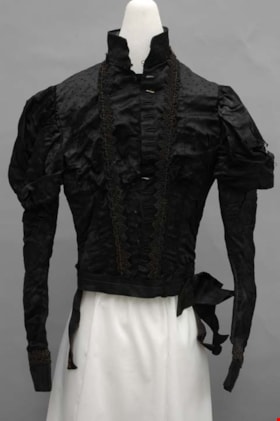
.jpg?width=280)
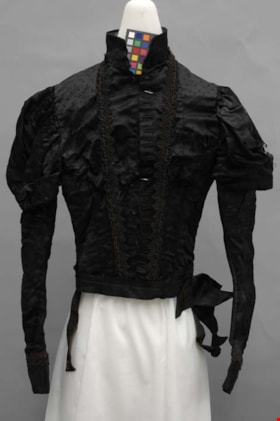
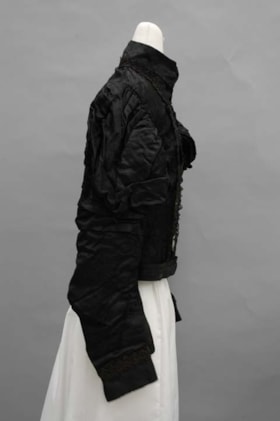
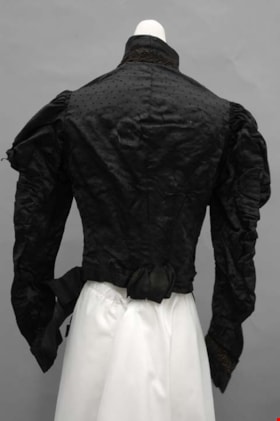
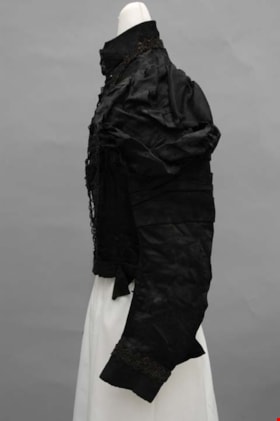
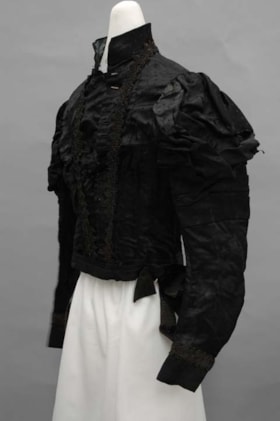
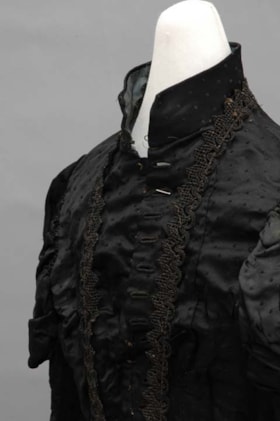
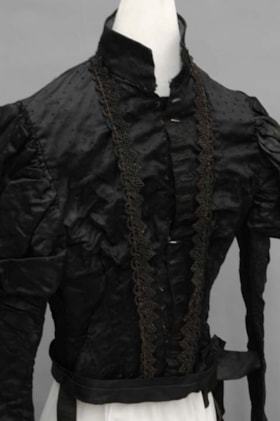
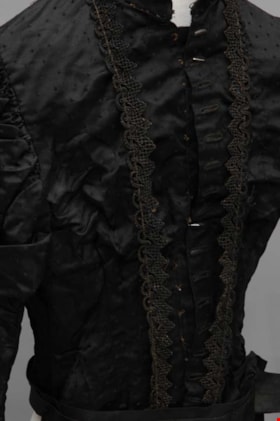
![Elementary school students, [between 1912 and 1928] thumbnail](/media/hpo/_Data/_BVM_Images/1985/198553310005.jpg?width=280)
